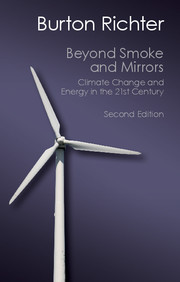3 - Climate Modeling
Published online by Cambridge University Press: 05 November 2014
Summary
Introduction
Scientific efforts to understand changes in the Earth’s climate extend back into the nineteenth century. Computers did not exist, and all calculations had to be done by hand. It was known back then that water vapor was an essential element in the Earth’s energy budget and had to be taken into account in any attempt to calculate what the climate might do. Carbon dioxide, one of several known greenhouse gases, was recognized as being particularly important because of its abundance and because it blocks outgoing radiation in some wavelengths where water vapor does not.
There was little concern about climate change until the 1950s when two things happened to wake us all up. Roger Revelle, then Director of the Scripps Institute of Oceanography in San Diego, California, calculated that seawater could only absorb carbon dioxide at one-tenth the rate that scientists had thought, and Charles David Keeling showed that CO2 in the atmosphere was increasing faster than anyone had thought possible, a finding that agreed with Revelle’s analysis. This was a double hit: CO2 stayed in the atmosphere longer and its concentration was going up faster than scientists had believed possible. It is worth a bit of time to tell the story of how something so important to today’s discussions could have been hidden for so long.
The First Climate Models
The first serious attempt to understand climate in terms of the interaction of the Earth’s energy budget with the contents of the atmosphere was made in 1896 by Swedish chemist Svante Arrhenius, who went on to win the Nobel Prize in Chemistry in 1903 for other work. His much simplified climate model took into account the greenhouse effect, including CO2. He calculated that reducing the CO2 in the atmosphere by half would lower the global temperature by about 8 °F (5 °C), which is as much as it was actually reduced in the last ice age. He also calculated that the temperature would increase by about +8 °F (+5 °C) if the CO2 in the atmosphere were doubled, not very different from today’s far more sophisticated models.
- Type
- Chapter
- Information
- Beyond Smoke and MirrorsClimate Change and Energy in the 21st Century, pp. 29 - 44Publisher: Cambridge University PressPrint publication year: 2014



